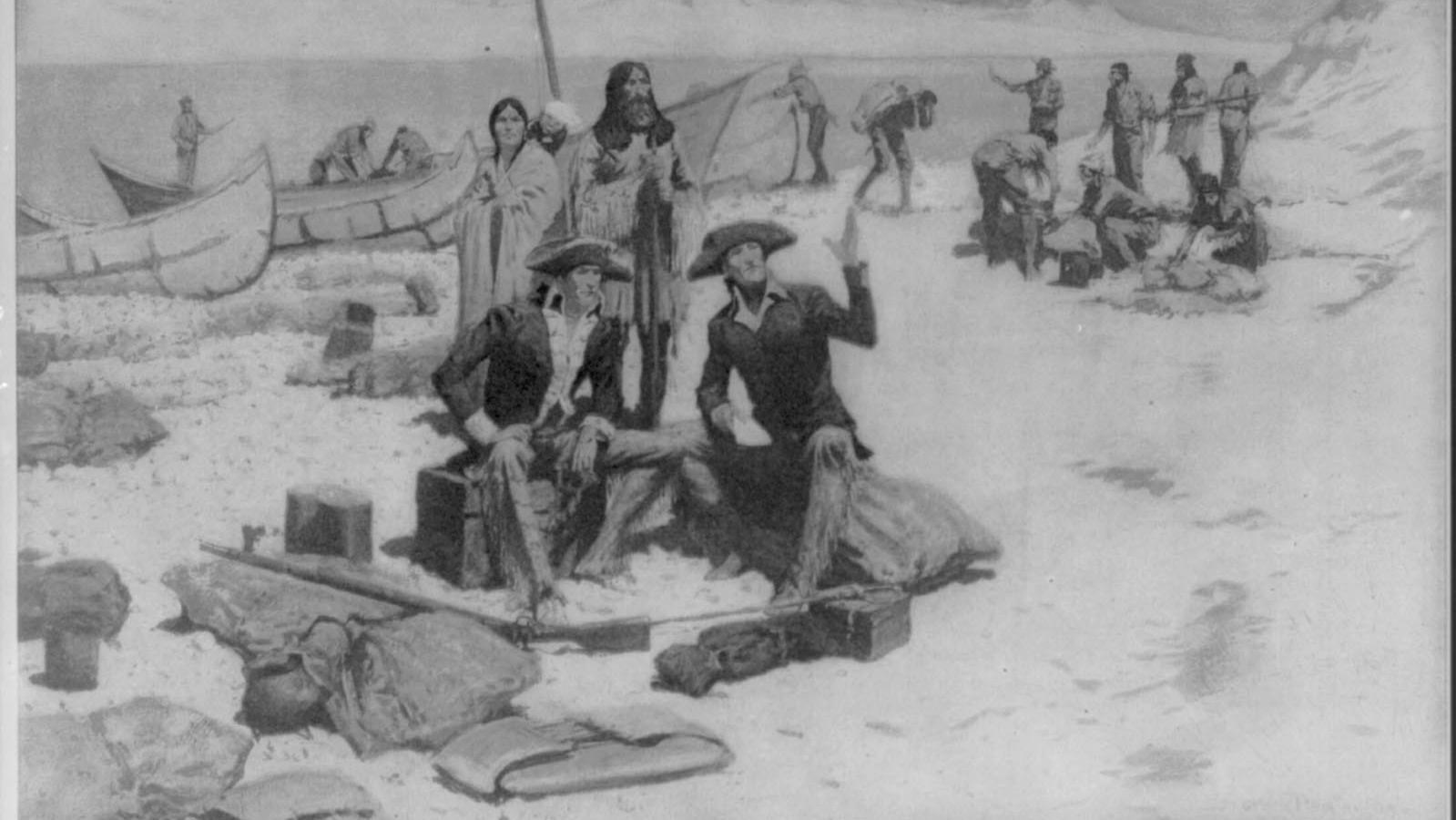Last updated: November 27, 2023
Place
Birth of Pomp

1905 Collier's Illustration by Frederick
Amphitheater, Food/Drink - Coffee, Gifts/Souvenirs/Books, Historical/Interpretive Information/Exhibits, Parking - Auto, Restroom, Restroom - Accessible, Wheelchair Accessible
On a cold February day in 1805, the screams of a woman in labor could be heard coming from a round earth lodge in a Hidatsa village near the Knife River. Inside, Sacagawea, just sixteen years old, was giving birth to her first child. The baby’s father, Toussaint Charbonneau, had lived in a Hidatsa town for years. Sacagawea was one of his two wives. She had lived in a Hidatsa community for several years, after being captured (or recaptured) from Shoshone people.
A few months earlier, in November 1804, Meriwether Lewis and William Clark had arrived at the Knife River villages, where they met Sacagawea and Charbonneau. Sacagawea was about six months pregnant when they arrived. The historical record provides few details about her pregnancy. Did she experience morning sickness? Did she crave certain foods? Did she wake up at night as the baby kicked inside her? It is impossible to know the answers to these questions. We do, however, know something about Sacagawea’s labor and the birth of her son.
On February 11, 1805, Meriwether Lewis wrote in his journal about Sacagawea’s labor. This was her first pregnancy and, as is often the case, “her labour was tedious and the pain violent.” Sacagawea’s attendants gave her “a small portion of the rattle of a rattle-snake” to speed the birth, and within ten minutes (at “about five oclock this evening”), the baby was born.
It is easy to imagine the relief and happiness Sacagawea may have felt that evening, holding her newborn son after a long and painful birth. They named the baby Jean Baptiste after his paternal grandfather.
At just two months old, Jean Baptiste accompanied his mother and father when they set out from Fort Mandan in April 1805 with Lewis, Clark, and crew.
Having a woman and an infant in the party signaled that its purpose was a peaceful one. Clark took a particular liking to Jean Baptiste and gave him the nickname Pomp.
Clark offered to provide Jean Baptiste with an education. Around 1812, he went to live with Clark in St. Louis. As an adult, Jean Baptiste traveled to Europe and guided several military expeditions in the western parts of North America. He died on May 16, 1866, at the age of sixty-one.
About this article: This article is part of series called “Pivotal Places: Stories from the Lewis and Clark National Historic Trail.”
Lewis and Clark NHT Visitor Centers and Museums
This map shows a range of features associated with the Lewis and Clark National Historic Trail, which commemorates the 1803-1806 Lewis and Clark Expedition. The trail spans a large portion of the North American continent, from the Ohio River in Pittsburgh, Pennsylvania, to the mouth of the Columbia River in Oregon and Washington. The trail is comprised of the historic route of the Lewis and Clark Expedition, an auto tour route, high potential historic sites (shown in black), visitor centers (shown in orange), and pivotal places (shown in green). These features can be selected on the map to reveal additional information. Also shown is a base map displaying state boundaries, cities, rivers, and highways. The map conveys how a significant area of the North American continent was traversed by the Lewis and Clark Expedition and indicates the many places where visitors can learn about their journey and experience the landscape through which they traveled.
